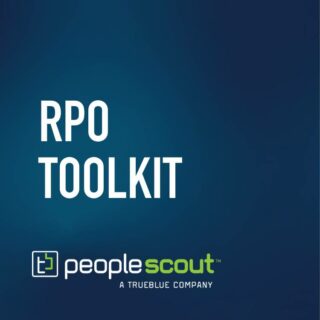With unemployment at historic lows, and only 30% of candidates actively applying to jobs, looks like it’s time to get passive! Passive? This might seem like an odd word choice, but passive candidates are simply highly qualified candidates not currently job hunting, while active candidates are applying to your open roles right now.
Research indicates that passive candidates may be more successful in organisations. According to Glassdoor, passive candidates are more efficient workers. Furthermore, passive candidates are twice as likely to join an organisation. However, some do not think passive candidates make better employees, partly because tracking passive candidates’ success at organisations has been poorly measured.
Regardless, data shows that it takes an average of 42 days to fill a role for a qualified external candidate. Some roles take longer, such as 67 days in the UK to fill a product management role. Engineering roles are also consistently harder to fill, taking 58 days in the U.S. and UK and 56 days on average in the rest of the world. When these types of hard-to-fill roles are needed, passive sourcing can be the best option to pursue.
What is Passive Sourcing?
Finding a qualified hire usually consists of a mix of active and passive applicants. Today, recruiting teams find passive candidates through various means, such as referral programs, online forums and job boards. More recently, recruiters have also started posting to social media platforms such as Twitter, Facebook and Instagram to find their next hire.
Passive sourcing searches were historically done through tedious Boolean search strings using dozens of search terms, like location, phone number and email address, to find candidates. These searches are manual and time consuming.
How Does AI Improve Passive Sourcing?
Recruiters spend approximately $34,440 per hire and 23 hours to screen for each open position. Meanwhile, recruiters carry a workload of 30-40 positions at a time. Add these numbers up and it might take several months for a recruiter to fill their open roles. Meanwhile, organisations also lose months of productivity and revenue from unfilled roles. Compound these losses with the rush to hire someone that might not be right for a role, and there is a possibility the recruiter may have to start the cycle all over again.
How can AI help? As AI’s influence throughout talent acquisition grows, sourcing qualified passive candidates in record time is now possible with AI.
Massive Data
AI excels at scale. Finding candidates instantly, AI algorithms can improve with each search, creating increasingly more intelligent sourcing. This is done by compiling and analysing a massive data set of millions of pieces of information including potential candidates’ social media profiles and past online activities, among other data.
AI’s passive sourcing function can also find triggers that indicate a candidate’s interest. Using an engineering requisition as an example, AI tools can scrape the Internet for candidates with specific job skills. For example, a search can be set up to find candidates with electrical engineering backgrounds with five to ten years of experience that are active on LinkedIn. AI will identify these parameters, search all additional available channels for intel including email, text, chatbot and phone records then aggregate the data and deliver a pool of qualified candidates to the recruiter.
Improved Personalisation
AI applications can also send targeted information to candidates using marketing-like campaigns, bringing in “leads” to help grow talent pipelines. This activity targets the right persona or type of candidate needed for a role and keeps passive candidates better engaged or “nurtured.” It also creates a unique candidate journey.
A recent report cites that organisations with an employer brand platform experience an average turnover rate of 10% compared to the overall turnover average of 16%.
At PeopleScout, we know a positive employer brand plays a significant role in their ability to hire talent. We implement AI sourcing and digital brand recruitment marketing campaigns through our Affinix™ platform that streamlines the sourcing process. Using these digital campaigns reinforces a company’s employer brand and consequently increases the nurture and conversion rates of future potential passive candidates.
Considerations for AI Passive Sourcing
While using AI to help source passive candidates is beginning to help organisations, there are a few considerations to keep in mind.
Mind Your Algorithms
Countless articles lament how well-meaning coders accidentally create biased AI tools. Most recently, Amazon released a recruiting tool that put female applicants at a disadvantage by highlighting more masculine language such as “executed” and “captured.” Therefore, AI algorithms should be used in concert with other recruiting tools and constantly monitored pre and post-build. Organisations such as OpenAI, the AI Institute and Explainable AI, among others, are reviewing AI’s impacts to make sure issues like unconscious bias are appropriately addressed.
Fit AI into Your Strategy
AI has the potential to improve aspects of the full recruitment cycle from sourcing, screening, selecting, hiring and onboarding. However, AI is only part of your toolkit and should be thought of as an efficiency tool to find better candidates faster. Monitor and adjust your strategy by testing AI’s sourcing skills. Because of the rapid data feedback loop you receive from AI, you’ll be able to quickly tweak social media and email campaigns as well as content you use to interact with candidates.
Getting Started with AI Passive Sourcing
According to a Deloitte Human Capital Trends report, 38% of companies are already using AI, and 62% expect to implement AI in some way by the end of 2019. In order to prepare for AI passive sourcing, keep the following in mind.
- Assess your current state. Are your operations streamlined today? Do you have existing issues with your methodology that need to be resolved before AI is added to your recruitment platform?
- Centralise your efforts so your AI tools tie together and create information in one place. Also, make sure all data streams, such as information from candidates and job boards, are collected in one place.
- Choose your vendors wisely to bring your AI ambitions to life. If the vendors you use are not able to articulate their business plans and longer-term technology capabilities, you should walk away.
Conclusion
Recruiters need to monitor AI passive sourcing capabilities as one of many AI efficiency tools to execute in the recruiting process. While ongoing debates swirl about the effects bias from AI efforts can create, if implemented and monitored properly, AI can also yield huge returns for your passive sourcing efforts. Organisations should consider PeopleScout to help source passive roles through PeopleScout’s proprietary, simple-to-use talent technology platform, Affinix.




